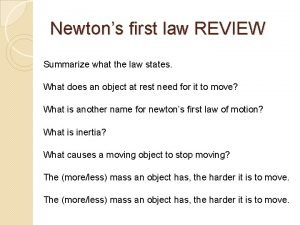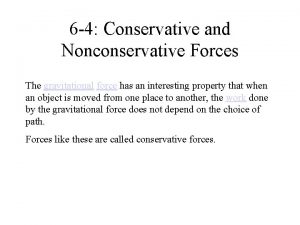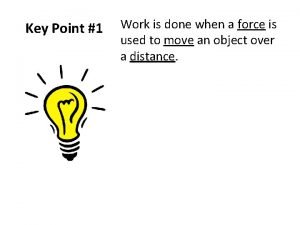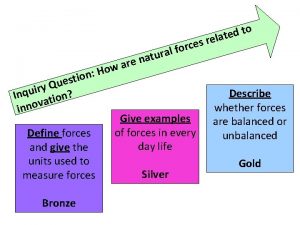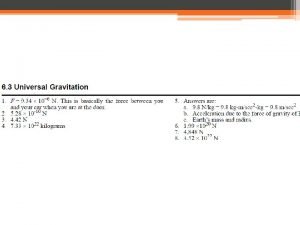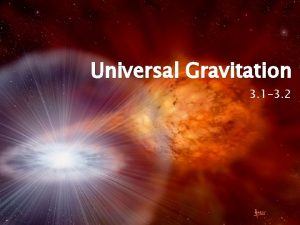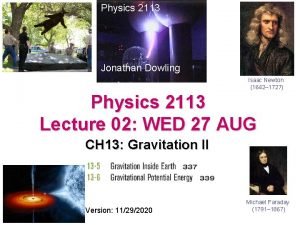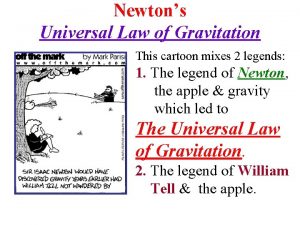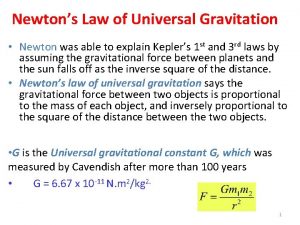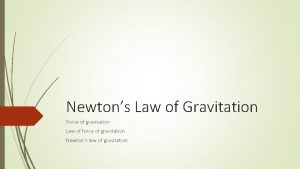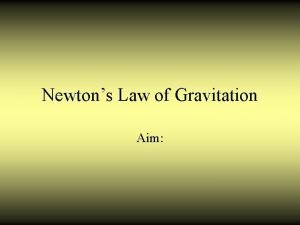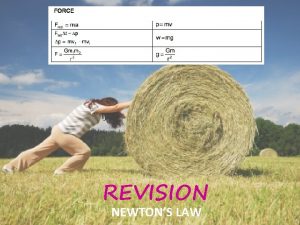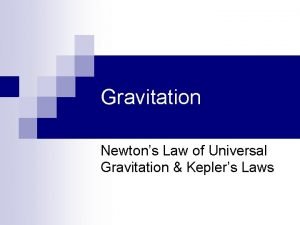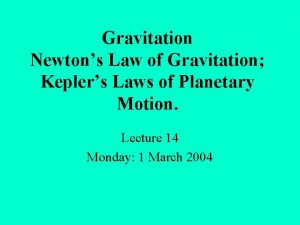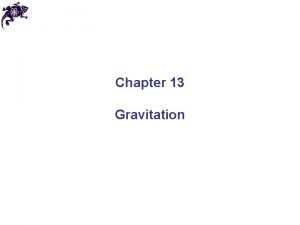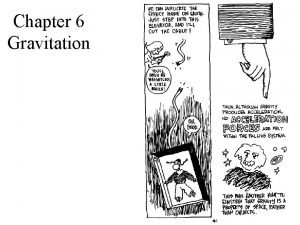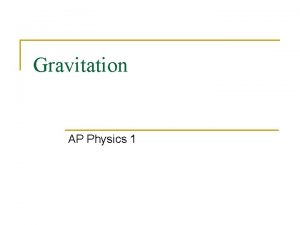Newtons Law of Gravitation Force of gravitation Law










- Slides: 10

Newton’s Law of Gravitation Force of gravitation Law of force of gravitation Newton’s law of gravitation

Force of Gravitation Definition: The force of attraction between all masses in the universe; especially the attraction of the earth's mass for bodies near its surface. The force of attraction that bodies exert on one another as a result of their mass. any process or result caused by this interaction.

Example: The force that holds the gases in the sun. The force that causes a ball you throw in the air to come down again. The force that causes a car to coast down hill even when you aren't stepping on the gas.

Law of Force of Gravitation Definition: Everybody in the universe attracts every other body with a force which is directly proportional to the product of their masses and inversely proportional to the square of distance between their centres.

Explanation: Consider two bodies of masses m 1 and m 2. The distance between the centres of the masses is d.

Cont…

Cont… Due to the small value of G, the gravitational force of attraction between objects around us is very small and we do not feel it. Since the mass of earth is very large, it attracts nearby object with a significance force. The weights of an object on the earth is the result of gravitational force of attraction between the earth and the object.

Law of Gravitation and Newton’s Third Law of Motion It is to be noted that mass m 1 attracts m 2 towards it with a force F while mass m 2 attracts m 1 toward it with a force of the same magnitude F but in opposite direction. If the force acting on m 1 is considered as action than the force acting on m 2 will be reaction. The action and reaction due to force of gravitation. This is consistent with Newton’s Third Law of Motion which states, Two every action there is always an equal but opposite reaction.

Problem: Two lead spheres each of mass 1000 kg are kept with their centres 1 m apart. Find the gravitational force with which they attract each other. Given data: m 1 = 1000 kg m 2 = 1000 kg d = 1 m Required: F=?

Cont… Solution: We know that: F = G m 1 m 2 / d 2 By putting the value: F = 6. 673 × 10 -11 Nm 2 kg-2 × 1000 kg × 1000 kg / (1 m)2 F = 6. 673 × 10 -5 N
 Mustafa sheikh lawyer
Mustafa sheikh lawyer Gravitational force is conservative
Gravitational force is conservative Angela uses a force of 25 newtons
Angela uses a force of 25 newtons Which object has the greatest inertia a falling leaf
Which object has the greatest inertia a falling leaf Acceleration
Acceleration A person lifts a 950 n box
A person lifts a 950 n box Explain newton’s universal law of attraction/gravitation.
Explain newton’s universal law of attraction/gravitation. Gauss law in gravitation
Gauss law in gravitation The universal law of gravitation written by isaac
The universal law of gravitation written by isaac Gravitational acceleration
Gravitational acceleration Newton's law of gravitation
Newton's law of gravitation
